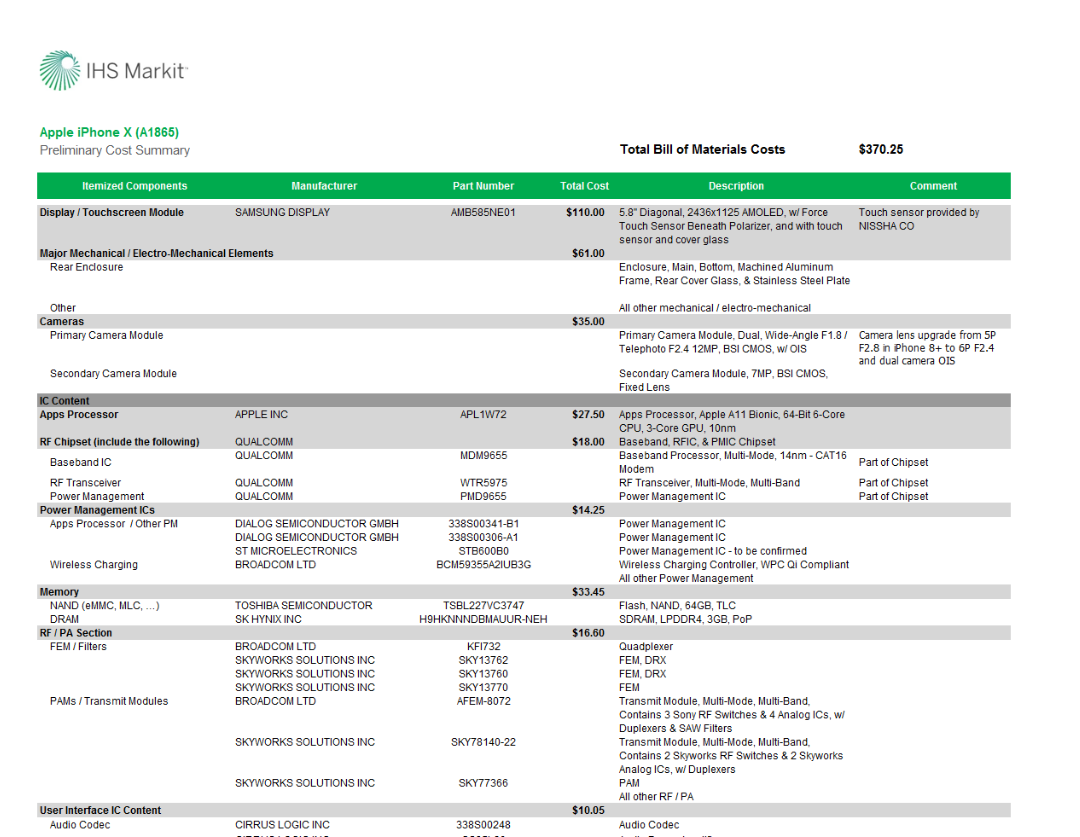When we speak with procurement departments, I am always struck by the need for secrecy. They have non-disclosure agreements in place with their suppliers that prevent their suppliers from revealing anything about the relationship (including its existence).
What are people afraid of? What’s the worst thing that could happen?
Do buyers really think that their competitors cannot figure out what goes into their products? Do buyers really think that they have some sort of competitive advantage that relies on the secrecy of their sourcing?
If they do, then they’re wrong.
In technology, for example, competitors routinely reverse-engineer each other’s products to get a good idea for what the bill-of-materials looks like. Analysts and competitors strip down Apple’s latest products the moment they hit the market.

On the other hand, governments have mandated transparency. For example, you can search easily on EdgeworthBox across agencies like the Department of National Defence for links to detailed pages on the Government of Canada website. You will find prices paid, vendor information, information about the procurement officer, etc. Check out this project, a requirement to purchase fifty-four “Light Multipurpose Utility Vehicles.”
Publishing this information forces the purchasing department to conduct a well-run process.
Louis Brandeis got it right when he wrote:
“Publicity is justly commended as a remedy for social and industrial diseases. Sunlight is said to be the best of disinfectants; electric light the most efficient policeman.”
The benefit from all this supplier secrecy is negligible and secrecy may obscure sub-optimal procurement patterns. What else do buyers sacrifice in conflating confidentiality with competitiveness?
By not publishing data on what your firm is purchasing, are you failing to advertise your interest to suppliers who might be able to solve your problems? Are you making it more difficult to attract replies to your RFPs?
Could companies benefit from collaborating with their competitors on learning about markets for the inputs they each require? Could buyers and suppliers have a more productive conversation about the direction of future product development and the establishment of product standards (that lead to lower unit costs, faster)?
The COVID-19 crisis may have an ancillary benefit in promoting cooperation between competitors. Here is the Chief Procurement Officer for AMD speaking about collaboration between rivals, “Companies are now able to learn from one another in real time through collaboration. It’s changing the nature of how companies view competitiveness.”
Competitive advantage is determined by the value your firm offers its clients.
For commoditized goods and services in which pricing is the determining factor as to which firm wins and which firm loses a deal, then maybe the bill-of-materials is a key factor in driving value.
For everyone else, where value is determined by how a company uniquely enables its customers to do things more efficiently or to bring new products to market or to consume in novel or must-have ways, then rivals focus on factors other than sourcing in trying to out-compete.
Does Apple really care that the world knows they can sell a phone for $1,000 that costs them $370 to make?
Apple focuses on delighting their customers, investing the coolness of the brand, developing the network effects of their app ecosystem, and innovating on new products and experiences.
Of course, having a transparent process (even though that publicity is imposed upon them by the market) helps to keep their procurement department accountable. Perhaps that explains why they are so successful at sourcing.
Apple also works with its competitors. So-called “Frenemies”, Apple and Samsung, compete hard in phones, even as Samsung is a key supplier of components to Apple.
EdgeworthBox is a platform combining a marketplace matching buyers-and-suppliers with tools from financial markets including centralized clearing of vendor administration and data, and social networking for collaboration among buyers and suppliers. It complements existing software from established vendors in a way that helps buyers and suppliers update the RFP process for the 21st century, wrapped in an app-like user experience. The tools alone are interesting, so come for the tools and stay for the marketplace.
We’d love to talk to you about a free trial. You can check us out with this video. Or drop us a line.




